
Aeshna, or the mosaic darners, is a genus of dragonflies from the family Aeshnidae. Species within this genus are generally known as "hawkers" or "darners".

The Gomphidae are a family of dragonflies commonly referred to as clubtails or club-tailed dragonflies. The family contains about 90 genera and 900 species found across North and South America, Europe, Asia, Australia, and Africa. The name refers to the club-like widening of the end of the abdomen. However, this club is usually less pronounced in females and is entirely absent in some species.
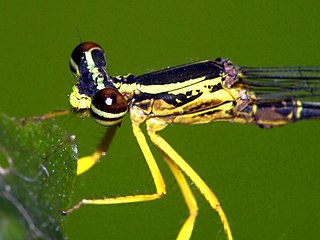
The Platycnemididae are a family of damselflies. They are known commonly as white-legged damselflies. There are over 400 species native to the Old World. The family is divided into several subfamilies.
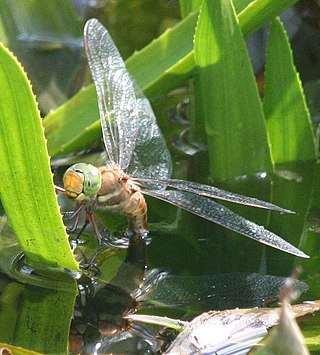
Anaciaeschna is a genus of dragonflies in the family Aeshnidae. Species of Anaciaeschna are found in Africa, Asia and Australia.

Gynacantha is a genus of dragonflies in the family Aeshnidae. The females have two prominent spines under the last abdominal segment. This gives the genus name and the common name two-spined darners; they are also known as duskhawkers.

The Synthemistidae are the family of dragonflies commonly known as tigertails, or sometimes called southern emeralds. This family is part of the superfamily Libelluloidea.
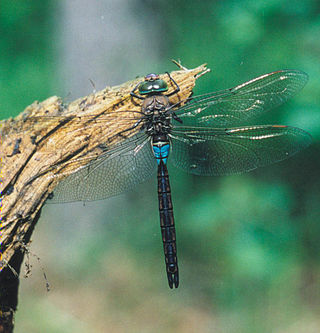
Anax is a genus of dragonflies in the family Aeshnidae. It includes species such as the emperor dragonfly, Anax imperator.

Aeshnoidea is a superfamily of dragonflies that contains two extant families, Aeshnidae and Austropetaliidae.

Libelluloidea is a superfamily of dragonflies.

Austroaeschna is a genus of dragonflies in the diverse family Aeshnidae.
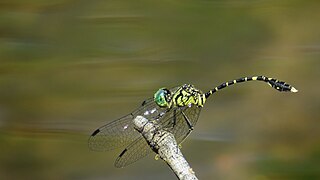
Nannophlebia is a genus of dragonfly in the family Libellulidae. They are commonly known as Archtails. The species are very small with black and yellow striped abdomens.
Telephlebiidae was once regarded as a separate family of dragonflies that were endemic to eastern and southwestern Australia. However, recent taxonomic revisions have resulted in the classification of species that were previously placed in Telephlebiidae as part of the family Aeshnidae.
Cordulephyidae was formerly considered a distinct family of dragonflies occurring in Africa and Australia. Recent taxonomic revisions have classified the species previously placed in Cordulephyidae to now be within the superfamily Libelluloidea.
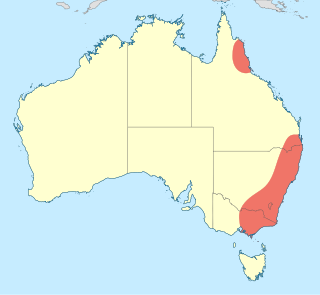
Spinaeschna is a genus of dragonflies in the family Aeshnidae. These dragonflies are endemic to eastern Australia, where they inhabit streams and rivers.
Austrocorduliidae was formerly considered a family of dragonflies occurring in South Africa and Australia. Recent taxonomic revisions have classified the species previously placed in Austrocorduliidae to now be within the superfamily Libelluloidea.
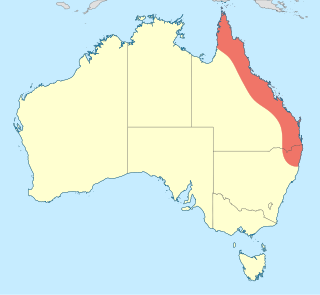
Micromidia is a genus of dragonflies in the superfamily Libelluloidea. They are small to medium-sized dragonflies, coloured black or metallic green with pale markings, and endemic to eastern Australia.
Gomphomacromiidae was formerly considered a distinct family of dragonflies occurring in Chile and Australia. Recent taxonomic revisions have classified the species previously placed in Gomphomacromiidae to now be within the superfamily Libelluloidea.

Pseudocordulia is a small genus of dragonflies endemic to tropical northeastern Australia. They are medium-sized, bronze-black dragonflies with clear wings.
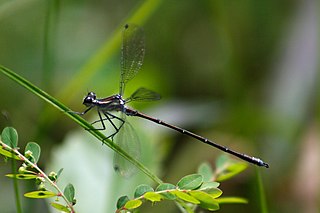
Calopterygoidea is a superfamily of damselflies in the order Odonata.
















